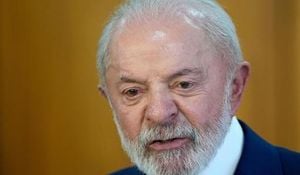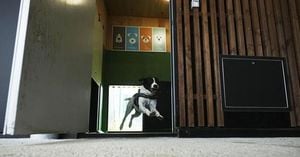Shares of Tesla soared following news reports indicating President-elect Donald Trump’s transition team plans to ease regulations on self-driving vehicles. The initial rumblings suggested the incoming administration would prioritize creating a federal framework for fully autonomous cars, marking a significant shift from stringent current regulations. This anticipated move drew immediate attention from investors, particularly benefitting Tesla, where much of CEO Elon Musk’s vision hinges on the rollout of his company’s autonomous vehicles, especially the upcoming Cybercab.
Numerous stock analysts reported significant movements: as of the latest updates, Tesla's stock rose over 6.3%, climbing to about $342.38. This rally follows shares’ general upswing since Trump’s election, with Tesla experiencing approximately 37% growth. Conversely, the repercussions were felt across ride-sharing giants Uber and Lyft, with their stock values slipping 3% and 2.3%, respectively. Investors perceived Tesla’s potential success with autonomous vehicle technology as directly threatening to Uber and Lyft’s business models.
The announcement highlighted Trump’s administration’s potential sway over the transportation sector with the National Highway Traffic Safety Administration (NHTSA) poised to roll out rules to ease restrictions on self-driving cars. Currently, manufacturers face limitations, such as only being permitted to deploy 2,500 autonomous vehicles per year without traditional steering controls. Efforts to raise this cap previously saw legislative backing but faltered, leaving the existing restrictions intact. With Trump's intent to streamline these regulations, major changes could soon be on the horizon.
Industry insiders revealed discussions had already taken place about easing rules, indicating Trump’s administration might even bypass Congress with regulatory changes through the NHTSA. Such measures could hasten Tesla's plans for commercializing their Cybercab, which Musk aims to launch around 2026.
Many analysts remain cautious but optimistic, signifying the upcoming changes could be transformative for the industry. Wedbush analyst Dan Ives remarked, "This situation forms a significant tailwind for Tesla’s autonomous and AI vision heading toward 2025," reflecting optimism about Musk's growing influence within the White House and the potential collaborative efforts between Trump and Musk.
Despite the buzz surrounding Tesla’s advancements, some experts questioned whether Uber’s business could adapt amid the looming competition from directly autonomous vehicles entering the market. Yet, there remains room for optimism concerning ride-sharing platforms. Citi analyst Ronald Josey noted, "Building out Autonomous Vehicle (AV) services, like fleet management, could lower the entry barrier for AV networks, leveraging existing Uber services."
Notably, Musk’s alignment with Trump seems strategic. Following the election, Trump appointed Musk as one of his key advisors to explore government efficiencies and regulation rollbacks, emphasizing how significant the tech entrepreneur's voice might become during these discussions. With self-driving technology representing what could be a $1 trillion opportunity, analysts forecast potential gains for Tesla over the next 12 to 18 months could balloon to 76% if the regulatory climate shifts favorably.
While some look toward these developments with hope, others caution about the potential consequences of swiftly pushing autonomous vehicle technologies onto roads. This technological leap, they argue, requires careful navigation of safety and regulatory landscapes. For now, the focus remains firmly on Tesla, marking its progress and potential challenges posed to other incumbents.
The debate surrounding self-driving cars isn’t merely technical—it taps directly at the core of urban connectivity and future transportation visions. Current technology holds promise, but whether society is ready to make the jump remains open for discussion. Regardless, as the Trump administration settles, the stakes for autonomous vehicle regulation will continue gaining momentum, keeping the industry on its toes.
At the end of the day, both Tesla and Uber are undergoing transformational moments as we stand on the brink of what could be the next big leap for mobility innovation. The outcome remains unclear, but one thing is for certain: with Trump’s administration poised to make bold moves, the driving forces within the industry will be forced to adapt or face the consequences of a rapidly changing transportation environment.



